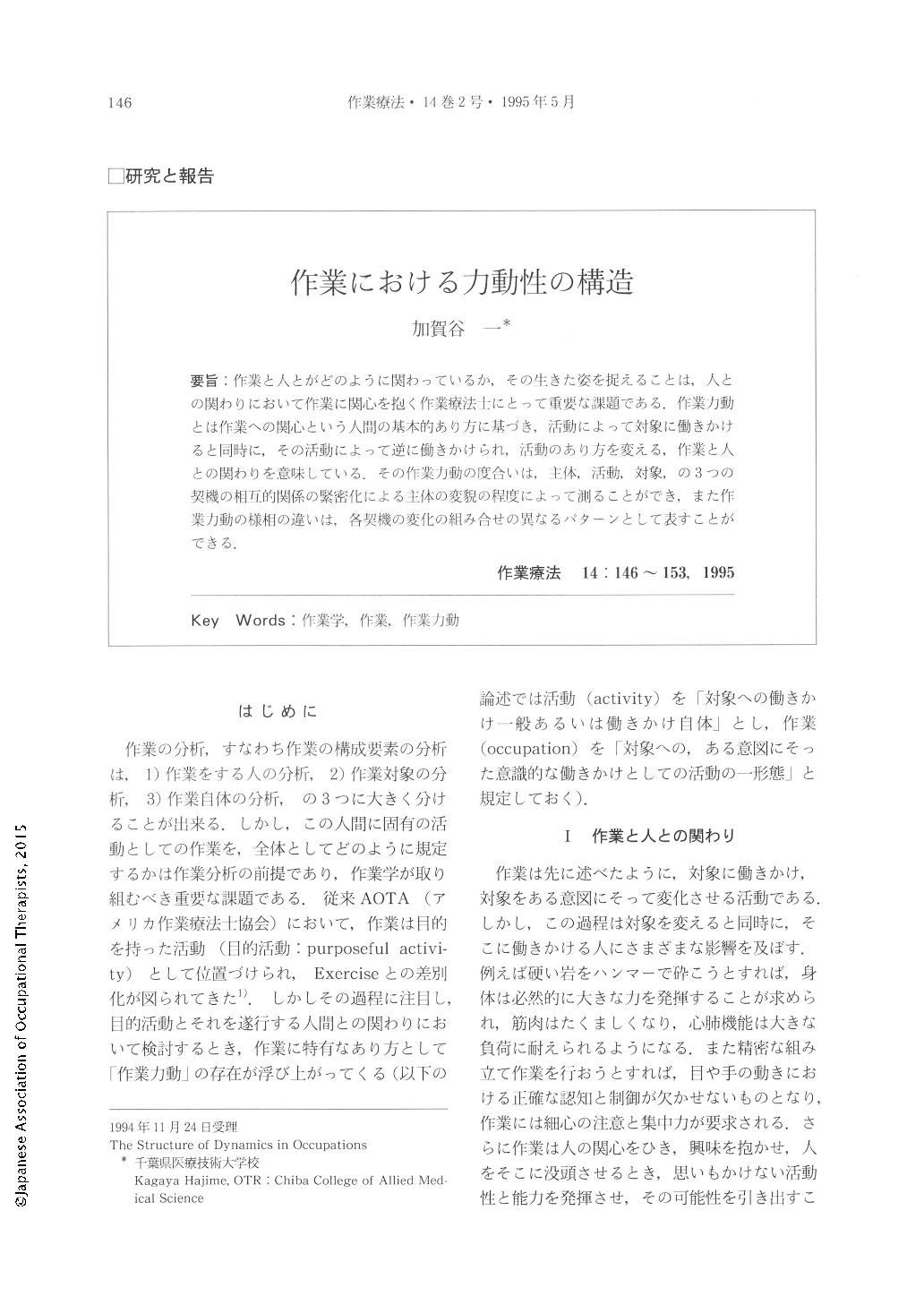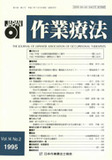Japanese
English
- 販売していません
- Abstract 文献概要
- 1ページ目 Look Inside
- 参考文献 Reference
- サイト内被引用 Cited by
要旨:作業と人とがどのように関わっているか,その生きた姿を捉えることは,人との関わりにおいて作業に関心を抱く作業療法士にとって重要な課題である.作業力動とは作業への関心という人間の基本的あり方に基づき,活動によって対象に働きかけると同時に,その活動によって逆に働きかけられ,活動のあり方を変える,作業と人との関わりを意味している.その作業力動の度合いは,主体,活動,対象,の3つの契機の相互的関係の緊密化による主体の変貌の程度によって測ることができ,また作業力動の様相の違いは,各契機の変化の組み合せの異なるパターンとして表すことができる.
For an occupational therapist interested in occupations of man, it is important to comprehend the relation between the occupation and the man and see the occupation as it really is. We distinguish three types in the relationship between man and his occupation. 1) the mechanical relation in the occupation (physical relation between man and the result) 2) the feedback relation between man and the result in the occupation as a purposeful activity. 3) the dynamic relation between man and the result in the occupation as an occupational activity.
Occupational dynamics is based on the close relationship between man and his occupation. Man has an interest in his occupation and its results. Occupational dynamics means that man (the subject) acts on something (the object) and his activity and his products affect man's style of activity. For example, he is encouraged to undertake new work or becomes disappointed and loses interest in the occupation because of the results. The relation between man and his occupation is not mechanical or prearranged. The unique characteristic of occupational therapy is related to this occupational dynamics.
The degree of occupational dynamics is measured by degree of the changes in a man induced by the close connection among the subject (man), the object, and the activity (we call these the three elements of the occupation). The various styles of occupational dynamics are revealed by the various combinations of conditions of these three elements.
The strengthening of occupational dynamics arises from an enhaced interrelation between these three elements. In this condition, we have an interest in our occupation or work and act voluntarily. The weakening of occupational dynamics arises from a loosening of the relationship between these three elements. In this condition, we become bored with our occupation and are unconcerned about our work.
For occupational therapists it is essential to understand the conditions of occupational dynamics.
The occupational therapists must be concerned with the occupation as an occupational activity as well as a purposeful activity. The occupational therapists can then make a total approach to the patient.

Copyright © 1995, Japanese Association of Occupational Therapists. All rights reserved.


